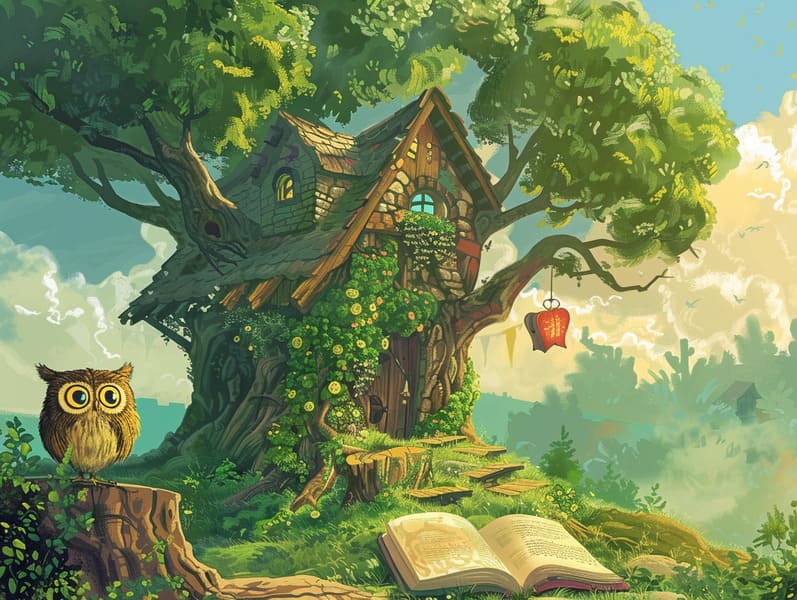The Origins of Fairy Tales for Kids and Its Consistent Appeal.
The Origins of Fairy Tales for Kids and Its Consistent Appeal.
Blog Article

Old fairy tales have old origins. These tales have been spoken from one generation to the next long before they were ever put on paper. They developed from a variety of traditions, including American traditions. They were initially shared among mature audiences, often carrying themes and messages pertaining to the societal norms and beliefs of the time.
The renowned Brothers Grimm, the two Grimm brothers, were among the first to compile many of these beloved tales. Their compilation, "Grimm's Fairy Tales," included classics like "The Little Glass Slipper," "Hansel and Grethel," and "Snow-White and Rose-Red," which have since become pillars in the world of iconic fairy tales. Similarly, Hans Christian Andersen's enchanting fairy tales, such as "The Mermaid," and "The Ugly Duckling," have gained the love worldwide, guaranteeing their place in the pantheon of famous fairy tales.
Though they are centuries old, fairy tales remain as meaningful as ever, especially as children's night stories. These delightful tales are now available in different formats, including vibrantly illustrated books, fantastical animations, and internet fairy tales.
Their lasting appeal can be attributed to several delightful features:
Significant Morals: Old fairy tales often provide important moral lessons. Stories like "The Boy Who Cried Wolf" teach the virtue of honesty, while "The Hare and the Tortoise" highlight the values of tenacity and humility. These narratives offer little ones clear distinctions between moral and immoral, developing their moral compass in a kind yet impactful way.
Warmth and Understanding: Ancient fairy tales frequently illustrate heroines facing difficulties and adversities, inciting children to relate with their struggles and rally behind their triumphs. For instance, "Beauty and the Beast" demonstrates the importance of seeing inner beauty to understand the true being of a person, advancing sympathy and appreciation.
Cultural Comprehension: Many classic fairy tales are saturated in the cultural contexts from which they originated. Discovering these tales can provide captivating looks into different heritages, fostering a sense of cultural understanding and comprehension.
Imagination and Creativity: The imaginative elements in fairy tales—spells and potions—stimulate children’s visions and dreams. These tales carry readers to magical realms, invigorating fantasy-filled thoughts and a sense of magic that remains a lifetime.
Ancient fairy tales are not only fantastical but also teaching. They function as enchanted tools in promoting various mental and emotional abilities in young readers. When classic fairy tales are read short fairy tales for kids aloud, they improve language acquisition by offering new terms and detailed sentence structures. This practice also fosters hearing perception and attentiveness, as young ones listen intently, prepared to see what happens next.
Furthermore, discussing the themes and characters of ancient fairy tales can develop evaluative skills and cognitive skills. Little ones are guided to notice patterns, anticipate outcomes, and grasp cause and effect. These explorations also encourage young readers articulate their thoughts and feelings, nurturing their emotional intelligence.
In today’s technological age, the accessibility of digital storybooks has made these tales more within reach than ever. Online platforms and apps extend large libraries of famous fairy tales that can be looked at or listened via anytime, anywhere. Fairy tales recited are particularly in demand, providing an fascinating method for kids to be a part of these magical stories. Spoken stories and read-out-loud stories transport characters and settings to life, often paired with charming audio effects and instrumentals that heighten the narrative journey.
The lasting allure of timeless fairy tales lies in their ability to transform to changing times while keeping hold of their main lessons. Contemporary modernizations of these stories often present more different protagonists and modern settings, making them familiar to today’s audience. However, the basic principles of guts, kindheartedness, and fairness remain unchanged, continuing to impact readers of all ages.
Classic fairy tales also offer a sense of reassurance and understanding. They deliver a organized narrative with a transparent beginning, middle, and end, often ending with the resolution of conflicts and the triumph of virtue over vice. This consistency can be encouraging for little ones, showcasing a sense of solidity in an fluid world.
Timeless fairy tales continue to enthrall and educate new generations, maintaining their spell and significance in modern society. As children's night stories, they bestow a perfect blend of delight and instruction, fostering moral values, empathy, and creativity. The availability of internet fairy tales and the widespread nature of fairy tales voiced warrant that these ancient fairy tales remain reachable to new generations.
By preserving and narrating these tales, we continue to pay tribute to the rich tapestry of tradition and cultural heritage. Whether you are discovering a colorful picture book, perusing a digital collection, or listening on an voice book, the elegance of famous fairy tales is always within reach. These stories reveal of the everlasting effect of fairy tales and its ability to unify us across eras and regions.
Even if you are browsing a artistically illustrated book, viewing a electronic collection, or listening to an sound book, the wonder of traditional fairy tales is always within reach.
These tales demonstrate of the unending essence of stories and its ability to hold us together across generations and cultures, casting a charm that captivates and teaches alike.